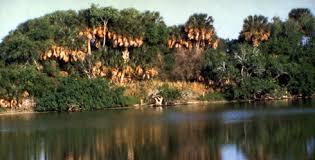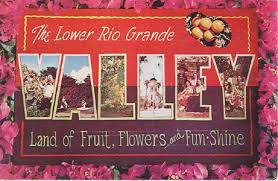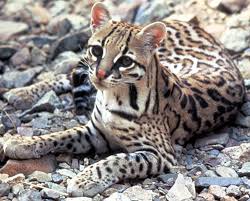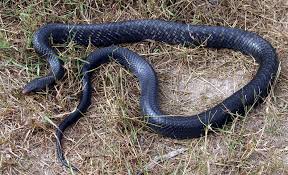For “Travel Tuesday”: Let’s go where it’s usually the warmest place in TX in the Winter, The RGV (Rio Grande Valley)
“The RGV is in the Texas Gulf Coast Region. Home to some of the best beaches in America, the Texas Gulf Coast region draws millions of visitors to this Texas playground. Stretching some 350 miles from South Padre Island & the Rio Grande Valley, all the way to Beaumont & the Louisiana border, this region is renowned for its wildlife & natural beauty, as well as the home of America's space program. Discover the Beaches of the Texas Gulf Coast Region.”
_______
"Texas is neither southern nor western. Texas is Texas."— Sen. William Arvis "Dollar Bill" Blakely
_______

The lower Rio Grande contains good agricultural land, the region being a true delta and the soils alluvial, varying from sandy and silty loam through loam to clay. The area of about 43,000 square miles witnessed a tremendous development in a period of about thirty years. This spectacular development is attributable to two factors: the introduction of irrigation on a large scale in 1898 and the building of the railroad in 1904.
Before that time the Valley was little more than quasi-desert rangeland. When the Spanish first occupied the area around 1750, they settled on the right bank of the river and divided the area north of the river into great cattle-ranch grants. The first American settlement in the area was Brownsville, which was founded as a result of the invasion of Zachary Taylor and the United States Army in the Mexican War (1846). The town, which sprang up around Fort Brown, remained practically the only settlement of size or distinction in the Valley for over half a century.
The coming of the railroad and irrigation made the Valley into a major agricultural center. In Hidalgo County, land that had been selling for twenty-five cents an acre in 1903, the year before the St. Louis, Brownsville and Mexico Railway arrived, was selling for fifty dollars an acre in 1906 and for as much as $300 an acre by 1910. A large-scale migration of midwestern farmers in the teens and twenties, matched by a growing surge of Mexican immigration during the same period, led to dramatic population growth in Valley counties. The population of Cameron County grew from just over 16,000 in 1900 to 77,540 in 1930; that of Hidalgo County climbed from 6,534 in 1900 to 38,110 in 1920 and just over 77,000 in 1930. By 1930 the population of the four lower Rio Grande valley counties exceeded 176,000.
The lower Rio Grande valley became a curious urban and rural combination by the 1940s. Intensified agricultural development resulting from irrigation dotted U.S. Highway 83, sometimes called the "Main Street," with communities made up of homes of farm owners and workers and the various stores, processing plants, industries, and marketing agencies that served them.
 Farms varied in use and character from ranchland to fine citrus land. The Valley became a truck garden center for tomatoes, cabbage, carrots, potatoes, beets, corn, green beans, onions, and minor crops. Cotton and sorghum became important staples early on, but the most important crop in the region is citrus fruit. Introduced commercially in the region in 1904, citrus fruit culture has survived severe freezes in 1949, 1951, 1961, 1983 and 1989.
Farms varied in use and character from ranchland to fine citrus land. The Valley became a truck garden center for tomatoes, cabbage, carrots, potatoes, beets, corn, green beans, onions, and minor crops. Cotton and sorghum became important staples early on, but the most important crop in the region is citrus fruit. Introduced commercially in the region in 1904, citrus fruit culture has survived severe freezes in 1949, 1951, 1961, 1983 and 1989.
The Valley also began to develop as a resort center in the 1940s. The year-round mild climate brought an increasing number of vacationers from the North during the winter months. McAllen, Brownsville, and other Valley communities have become winter homes for many northerners; in 1988 Hidalgo County hosted 80,000 of these "snowbirds."
Fishing-freshwater, saltwater, and deep-sea-is a great attraction. Access to Mexico also promoted tourism as an important part of the Valley economy. Reynosa and Matamoros, on the Mexican side across the river from McAllen and Brownsville respectively, cater to the tourist trade, and Monterrey, Nuevo León, is only 180 miles away. The combined population of the four lower Rio Grande valley counties grew to 320,484 by 1950, then remained relatively stable through the 1950s and 1960s. The 1970s and 1980s witnessed dramatic growth in the Valley, as the population rose to 537,811 in 1980 and more than 700,000 in 1990.” More at:: http://www.tshaonline.org/handbook/online/articles/ryr01
_______
Lennox Foundation Southmost Preserve

 Sabal palm trees at the Lennox Foundation Southmost Preserve.
Sabal palm trees at the Lennox Foundation Southmost Preserve.
“Southmost Preserve is located on a meandering bend of the Rio Grande at the southernmost part of Texas. As part of the Boscaje de la Palma region of the Lower Rio Grande Valley Wildlife Corridor, the 1,034-acre preserve encompasses one of the last stands of native sabal palm trees in the country. This land has been called the "Jewel of the Rio Grande Valley" and many would argue that Southmost Preserve is one of the most ecologically important pieces of land remaining in the Valley.
 This preserve is home to one of the only two remaining large stands of native Mexican sabal palms in the U.S. In addition, several large tracts of Tamaulipan thornscrub are found here. A number of species at the northernmost extent of their range are present, such as David's milkberry, potato tree, Palmer's bloodleaf, and climbing plumbago. The bright fuchsia floral spikes of coral bean trees and the scarlet flowers of Turk's cap are abundant in spring beneath the canopy of palms and tall riparian trees.
This preserve is home to one of the only two remaining large stands of native Mexican sabal palms in the U.S. In addition, several large tracts of Tamaulipan thornscrub are found here. A number of species at the northernmost extent of their range are present, such as David's milkberry, potato tree, Palmer's bloodleaf, and climbing plumbago. The bright fuchsia floral spikes of coral bean trees and the scarlet flowers of Turk's cap are abundant in spring beneath the canopy of palms and tall riparian trees.

The natural vegetative communities of Southmost Preserve provide habitat for a number of rare, threatened or endangered species, including the Southern yellow bat, Texas tortoise and Coue's rice rat. The speckled racer, a rare snake, has been sighted on the preserve, as has the black-spotted newt.

Because of the its unique flora and fauna and rich biological diversity, the property has long attracted the attention of conservation biologists. Despite the land's history of agricultural use, the preserve's sabal palm forest, resacas and Tamaulipan thornscrub are, remarkably, among the largest and highest-quality examples of these native communities in the region.” From: http://www.nature.org/ourinitiatives/regions/northamerica/unitedstates/texas/placesweprotect/lennox-foundation-southmost-preserve.xml
_______
![]() Lennox Foundation Southmost Preserve
Lennox Foundation Southmost Preserve

“Visitors - by appointment only - might see a Blackstripe Snake, a Speckled Racer, or an Indigo Snake. The nearby Sabal Palms sanctuary of the Audubon protects similar habitat and would also be a fantastic herping destination.” http://texasherp.org/index.html
_______
Birds:
 “The Southmost Preserve is part of major migratory flyways. Birds that may be observed here include the Altamira oriole, chachalaca, green jay, tropical parula, buff-bellied hummingbird, black-bellied and fulvous whistling duck, groove-billed ani, Couch's kingbird, and olive sparrow. The wooded fringes of the resacas offer some of the last remaining nesting habitat known for two rare subspecies of birds, the Brownsville common yellowthroat and the Lomita Carolina wren.”
“The Southmost Preserve is part of major migratory flyways. Birds that may be observed here include the Altamira oriole, chachalaca, green jay, tropical parula, buff-bellied hummingbird, black-bellied and fulvous whistling duck, groove-billed ani, Couch's kingbird, and olive sparrow. The wooded fringes of the resacas offer some of the last remaining nesting habitat known for two rare subspecies of birds, the Brownsville common yellowthroat and the Lomita Carolina wren.”
______
Southmost Preserve: Threatened Treasure
________
The Border Fence:
Border Fence (Image: http://www.mysanantonio.com/Nature Conservancy)
“After 5 years of battle, the walls are not torn down, but closing.
A recent settlement will pay the Nature Conservancy compensation only for land the fence is actually on: 8.31 acres. It pays for a stripe of land crossing the northern edge of the property. Fragmenting the 1,034 acres of the preserve. Closing off 800 acres south of fence. (3/4 of the preserve) Endangering fragile habitat for Texas’ at risk wildcats: the ocelot and jaguarundi.
No longer available for honest responsible people: hikers, researchers, school groups, bird watchers searching the preserve’s jungle, people wanting to learn sustainable farming suitable for the region, or those wanting to learn about using native plants in landscaping.
Law abiding citizens and visitors who probably won’t dare tunnel under or use a ladder to scale the 18 foot fence.
 Border Wall in Texas, photo courtesy Scott Nicol
Border Wall in Texas, photo courtesy Scott Nicol
“The official international group that regulates flooding potential along the Rio Grande Valley voiced concerns that the fence would collect debris and increase flooding in the flat Rio Grande floodplain.”
_______
A Barrier for South Texas Wildlife

A pedestrian fence cuts across the Southmost Preserve near Brownsville, Tex. Erika Nortemann/The Nature Conservancy
“A line of 18-foot-high steel posts spaced four inches apart flank the entrance of part of one of the most biodiverse ecosystems in the United States, and one of the most endangered. Bifurcated by the fence is the Nature Conservancy’s Southmost Preserve near Brownsvillle, Tex., whose threatened species include the Southern yellow bat, the Texas tortoise and the ocelot, an endangered cat whose estimated American population is under 50. One of the few remaining stands of native sable palms in the United States grow there as well.
The posts are part of a 70-mile “pedestrian barrier” between Falcon Dam and the Gulf of Mexico that was built to deter illegal immigration and drug trafficking. It lies anywhere from hundreds of yards to several miles north of the border. Before construction started in 2009, experts expressed concern about the effects of the fence on so-called wildlife corridors in the Rio Grande Valley. Now they are taking stock of the impacts.
“All wildlife roam along corridors,” said Laura Huffman, director of the Texas branch of the Nature Conservancy. “These are nature’s highways. Any time you put an obstacle in a highway, it’s going to affect mobility, the ability of animals to move back and forth.” At the Southmost Preserve, the bottom of the fence is pierced by 8-by-11-inch openings every 500 feet. These aren’t large enough for many animals, biologists say, nor were they positioned on the basis of existing data on wildlife corridors.
“Smaller animals – young coyotes, weasels, jackrabbits – can get through the holes, but larger animals can’t,” Ms. Huffman said. “The wall seems to have caused changes to movement patterns of many wildlife. We’re seeing tracks of deer and javelina where we weren’t before. I suspect they are having to follow along the fence to attempt crossings.”
The federal Fish and Wildlife Service has used cameras and collars to monitor bobcats in the Rio Grande Valley for more than 12 years. So far it has no evidence that bobcats are using the openings.
Ms. Huffman said the wall also seems to have changed some animals’ movement patterns. “We’re seeing tracks of deer and javelina where we weren’t before,” she said. “I suspect they are having to follow along the fence to attempt crossings.” For the ocelot and the jaguarundi, another small cat, interbreeding between populations on both sides of the Rio Grande river is considered critical to maintaining genetic diversity.
“The fence limits the travel of larger animals,” said the department’s regional director, Len Polasek. “It also prevents animals from getting to the river for water.” More at: http://green.blogs.nytimes.com/2012/10/04/a-barrier-for-south-texas-wildlife/
______
On This Day:
Christ is born? Dec 25, 6 B.C.: ![images[2] images[2]](https://blogger.googleusercontent.com/img/b/R29vZ2xl/AVvXsEhL7eWcPd_m2w3NtV8J81ILrfH78B0YUujHXiyXu-cIeplQMymF6BsgB7wxQpC_EZ8DC4V82XmkCOptDjM8pq06iSdIROZyUuIzYqpY6Ny9BgmfnGnKTOzg_nX2PvS54vbSNqM5cXSy4ntC/?imgmax=800)
“Although most Christians celebrate December 25 as the birthday of Jesus Christ, few in the first two Christian centuries claimed any knowledge of the exact day or year in which he was born. The oldest existing record of a Christmas celebration is found in a Roman almanac that tells of a Christ's Nativity festival led by the church of Rome in 336 A.D. The precise reason why Christmas came to be celebrated on December 25 remains obscure, but most researchers believe that Christmas originated as a Christian substitute for pagan celebrations of the winter solstice.
To early Christians (and to many Christians today), the most important holiday on the Christian calendar was Easter, which commemorates the death and resurrection of Jesus Christ. However, as Christianity began to take hold in the Roman world, in the early fourth century, church leaders had to contend with a popular Roman pagan holiday commemorating the "birthday of the unconquered sun" (natalis solis invicti)--the Roman name for the winter solstice.
Every winter, Romans honored the pagan god Saturn, the god of agriculture, with a festival that began on December 17 and usually ended on or around December 25 with a winter-solstice celebration in honor of the beginning of the new solar cycle. This festival was a time of merrymaking, and families and friends would exchange gifts. At the same time, Mithraism--worship of the ancient Persian god of light--was popular in the Roman army, and the cult held some of its most important rituals on the winter solstice.
After the Roman Emperor Constantine I converted to Christianity in 312 and sanctioned Christianity, church leaders made efforts to appropriate the winter-solstice holidays and thereby achieve a more seamless conversion to Christianity for the emperor's subjects. In rationalizing the celebration of Jesus' birthday in late December, church leaders may have argued that since the world was allegedly created on the spring equinox (late March), so too would Jesus have been conceived by God on that date. The Virgin Mary, pregnant with the son of God, would hence have given birth to Jesus nine months later on the winter solstice.
From Rome, the Christ's Nativity celebration spread to other Christian churches to the west and east, and soon most Christians were celebrating Christ's birth on December 25. To the Roman celebration was later added other winter-solstice rituals observed by various pagan groups, such as the lighting of the Yule log and decorations with evergreens by Germanic tribes. The word Christmas entered the English language originally as Christes maesse, meaning "Christ's mass" or "festival of Christ" in Old English. A popular medieval feast was that of St. Nicholas of Myra, a saint said to visit children with gifts and admonitions just before Christmas. This story evolved into the modern practice of leaving gifts for children said to be brought by "Santa Claus," a derivative of the Dutch name for St. Nicholas--Sinterklaas.” From: http://www.history.com/this-day-in-history/christ-is-born?catId=6
______
More from The History Channel:
Christmas Becomes a Holiday (2:48) TV-PG
Today's Christmas celebrations combine secular and religious traditions.
http://www.history.com/videos/birth-of-a-holiday#birth-of-a-holiday
-----
Bet You Didn't Know: Christmas (2:45) TV-14
Did you know Christmas wasn't always celebrated on December 25th? Get the whole story behind the holiday.
http://www.history.com/videos/birth-of-a-holiday#bet-you-didnt-know-christmas
-----
Evolution of Santa Claus (2:48) TV-PG
The modern image of Santa Claus has been refined again and again.
http://www.history.com/videos/birth-of-a-holiday#evolution-of-santa-claus
-----
Evolution of Christmas (2:39) TV-PG
Christmas has evolved from solstice celebration to family feast.
http://www.history.com/videos/birth-of-a-holiday#evolution-of-christmas
------
History of the Christmas Carol (2:40) TV-14
Get the facts on the tradition of Christmas carols and find out how "Jingle Bells" came about.
http://www.history.com/videos/birth-of-a-holiday#history-of-the-christmas-carol
______
A Christmas Tale
 “Today I want to talk about the celebration of Christmas. First, I will begin with a story.
“Today I want to talk about the celebration of Christmas. First, I will begin with a story.
Imagine this scenario: You are a renowned philosopher. Your teachings have been written down and have reached the entire world. Your philosophy is one of care and concern for others and obedience to a moral code of personal conduct. The time comes one day when you take a sabbatical to a remote location. You are isolated from everything and everybody, but you tell your followers you will return.
Much later, when you do return, you notice something bizarre has happened. You were gone, but never forgotten. In fact, you have become a cultural icon with millions of ardent followers. Your book is the best-selling book in the world. Strangely, even though your philosophy has permeated the entire world, the central teaching of it is all but forgotten. And very few people have actually read your book!
Everyone is focused on you and what you have done, but not on your message. The biggest annual celebration for you is something they invented long after you left—a huge birthday party with lavish festivities, exchanging gifts, and selling and displaying your likeness as a baby. The problem is, you never told them to do this; in fact, they even have the wrong month of your birth!
What are you to think?!
This short story, while it is fiction, is actually based, I’m sad to say, on someone very real—the Lord Jesus Christ. Millions claim to worship and adore the little baby Jesus during the celebration of Christmas, but it’s a day that His disciples never kept and a date that is not even mentioned in the Bible.
Scholars say that, based on the biblical description of His birth, Dec. 25 isn’t even close to the time that Jesus was born. Those who came to visit the young Messiah brought gifts to Him. Why? Because He was a king. That was the custom of the day. They didn’t give gifts to each other. That would have been an insult to Jesus, the King of kings.
Today most people celebrating Christmas profess to follow Christ, but they ignore the message He brought. Jesus and His true disciples focused on a coming kingdom, the Kingdom of God. They celebrated holy days—God’s holy days—not the thinly veiled profane holidays of ancient Rome. To this day, God’s yearly pattern of holy days clearly paints a vivid picture of the Lord, His sacrifice and His future rulership as the King of kings.
Christmas, on the other hand, is a picture of self-indulgence without any spiritual purpose sanctioned by Scripture. Some desperately campaign to “put Christ back in Christmas”—but He was never there in the first place! His philosophy of love for God and love for fellow man has been discarded for a counterfeit philosophy of greed and consumption. It is reported that U.S retailers sold an amazing $469 billion (that’s billion!) of goods during the 2011 Christmas season. Are we a happier, more righteous country with less crime and brutality because of it? I think not.
Now contrast this false holiday with the true biblical holy days that are sanctioned by God and were observed by the New Testament Church. God’s holy days teach His people how to live an abundant life—a life of joyful anticipation of the return of the Messiah.
Isn’t it time that you opened the world’s best seller, the Bible? Yes, open your Bible and start learning the true philosophy of life straight from the Master Philosopher and Creator of all life—the Lord Jesus Christ.” From: http://lifehopeandtruth.com/speaking-of/a-christmas-tale/
_______
Honor God, Don't Keep Christmas

A Danish Christmas tree. Source: Wikimedia Commons/Malene Thyssen
“For several years after becoming aware of the pagan associations, I still thought it was okay to keep Christmas. My intentions were good. I wanted to honor Christ. But is having good intentions good enough?
After studying Scripture, I came to realize that celebrating a day rooted in ancient paganism, no matter how pure my intentions were, was an insult to God.
One of my favorite scriptures is Deuteronomy 12:32 “Whatever I command you, be careful to observe it; you shall not add to it nor take away from it”
Also consider two other scriptures. “You shall not add to the word which I command you, nor take away from it, that you may keep the commandments of the Lord your God which I command you” (Deuteronomy 4:2) “Do not add to His words, lest He rebuke you, and you be found a liar” (Proverbs 30:6)
In Jeremiah, God tells us not to learn the customs of others. He calls them “worthless.” “Do not learn the ways of the nations…for the customs of the peoples are worthless; they cut a tree out of the forest, and a craftsman shapes it with his chisel. They adorn it with silver and gold; they fasten it with hammer and nails so it will not totter” (Jeremiah 10:1-4 ).
Man made Christmas, not God. Let’s honor God by not associating ourselves with Christmas.” From: http://www.ucg.org/blog/honor-god-dont-keep-christmas/
------
From me: Jeremiah was written 600 years before Jesus was born.
------
Christians Who Don't Celebrate Christmas: Here's Why
Why do some Christians not celebrate Christmas? Here are the reasons some gave for kicking the Christmas habit: http://www.ucg.org/doctrinal-beliefs/christians-who-dont-celebrate-christmas-heres-why/
______
Yesterday:
With a holiday coming up, I knew I had better get into the next town early to get what I needed. I dropped off the paper recycling, plastic recycling and some donated items at the thrift shop. I knew they would be closed this week, but they have a covered area for such things, and it was nearly full.
The weather was great and I knew that I would be going to Petsmart for Misty’s food, so I nearly took her along, but worried about being stuck in traffic, so I left her at home. The traffic wasn’t as bad as I expected, and it didn’t take long to get what I needed.
If you offered someone a glass of clear water with a drop of sewage in it, they wouldn’t want it. That is the way I feel about Christmas, why would our Lord want us to celebrate, or worship him in a holiday wrapped around pagan customs? Christmas is not mentioned in the Bible, and the disciples certainly didn’t celebrate it. (1Cor 10:21 - You cannot drink the cup of Yahweh and the cup of demons; you cannot partake of Yahweh's table and of the table of demons.)
It is a manmade holiday, driven to popularity by commercialism. Once you realize that, all the pretty lights and Santa effigies look very sickening. There are many other days when a family could get together and worship, most of them commanded by God. http://www.ucg.org/booklet/holidays-or-holy-days-does-it-matter-which-days-we-observe/gods-days-worship/gods-festivals-/ Also what about the other days of the year? Families can have a reunion any time it is desired.
It is often not a happy time of the year for a lot of people. A young man in our subdivision wanted to commit suicide yesterday, he is on a 24 hour watch now, until he is committed for psychiatric treatment tomorrow.
So now you know why I do not wish you a Merry Christmas, as to me, it is just other day.




























3 comments:
There was a king way back when, who wanted to satisfy all his subjects so he combined the yule season (a pagan holiday) with a Christian holiday and that was when the Yule tree also became the Christmas tree.
I'm beginning to agree with you but unfortunately my family don't so away we go to my sister's to celebrate Christmas. Have a restful day Penny.
Thank you for your comments, DD and Sandra.
Yes, DD, it is mostly a commercial holiday, and people would be a lot better off by looking into the roots of it.
Sandra, My family is the same way, even though they were taught the Truth when they were children. Peer pressure and Satan are both driving forces. Amos 5:21-24.
Happy Tails, and Trails, Penny,
Post a Comment